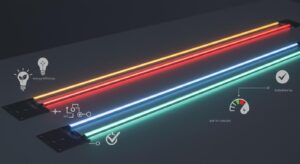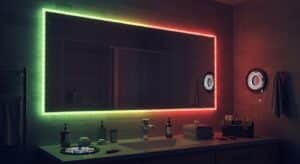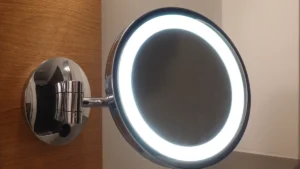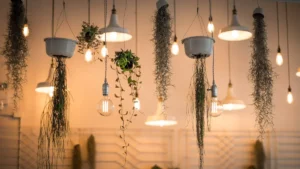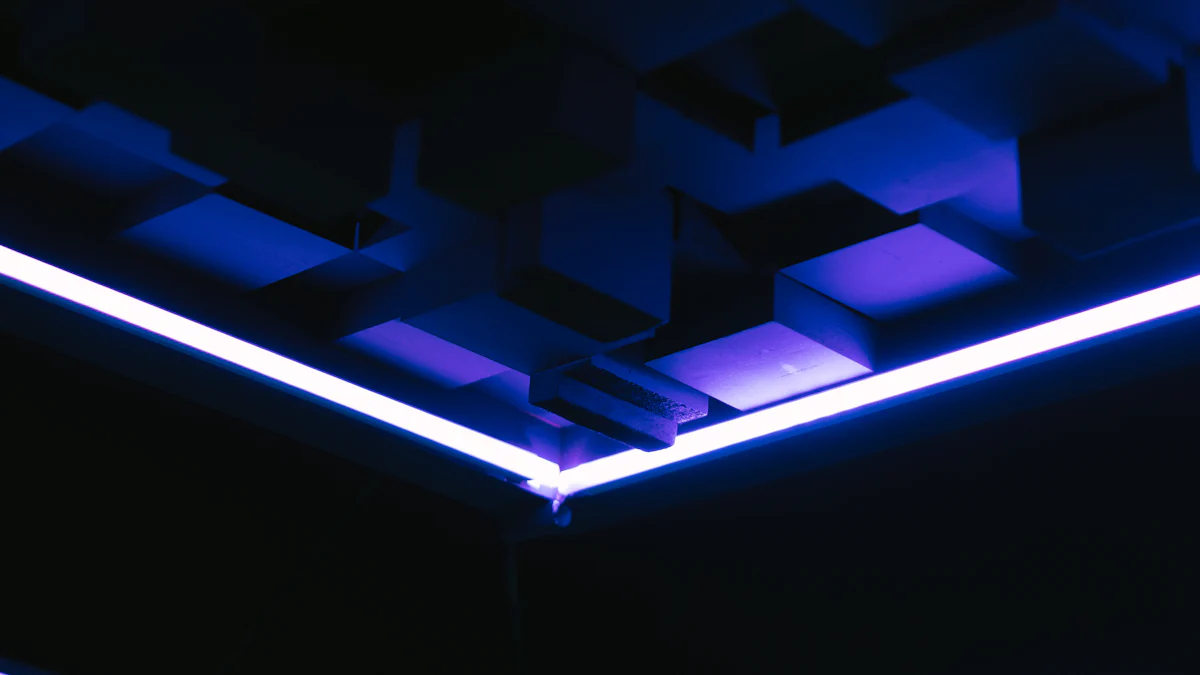
When choosing between led strip 2835, 3528, and 5050 LED strips, understanding their differences can help you make the right decision. Each type offers unique advantages in size, brightness, efficiency, and applications. For example, led strip 2835 delivers up to 200 lumens per watt, making them ideal for energy-efficient general lighting. In contrast, 3528 LED strips consume less power (4.8 watts per meter) and work best for accent or decorative lighting. If you need vibrant illumination or RGB effects, 5050 LED strips provide high brightness and versatility. Your choice depends on your lighting goals, budget, and desired effect.
Overview of LED Strip Types
led strip 2835
2835 LED strips are known for their compact size and exceptional energy efficiency. These strips feature a slim design, making them ideal for installations in tight spaces. You can easily customize them by cutting at designated intervals, which allows for precise adjustments to fit your project. Their low operating temperature ensures safety and reduces the risk of heat-related damage.
Feature | Description |
|---|---|
Compact Size | Slim design for easy installation in narrow spaces. |
Cuttable and Flexible | Can be cut at designated intervals for customization. |
Even Light Distribution | Operates at low temperatures, reducing heat-related damage. |
Versatile Lighting Options | Available in various color temperatures and RGB options. |
Dimmable Options | Many variants are compatible with dimmers for adjustable brightness. |
Wide Range of Applications | Suitable for residential, commercial, and architectural lighting. |
CRI Options | Available with CRI ratings of 80, 90, and 95 for excellent color rendering. |
Heat-resistant Design | Features a special PCB layout for better heat dissipation. |
Waterproof Ratings | Available in IP20, IP65, IP67, and IP68 for various environmental conditions. |
Lifespan | Typically lasts between 30,000 to 50,000 hours. |
These features make 2835 LED strips a versatile choice for general lighting and energy-efficient applications. Whether you need bright task lighting or subtle ambient illumination, these strips deliver consistent light output with minimal power consumption.
3528 led strips
3528 LED strips are perfect for accent and decorative lighting.They produce a softer glow compared to other types, making them ideal for creating a cozy ambiance. You can use them to highlight architectural features, such as coves or shelves, or to add a decorative touch to your space.
Unlike 2835 LED strips, 3528 strips are less bright and typically available in single-color options. This makes them less suitable for high-output tasks but perfect for subtle lighting effects. Their energy efficiency ensures that you can achieve beautiful lighting without significantly increasing your electricity bill.
5050 led strips
5050 LED strips stand out for their high brightness and RGB capabilities. Each chip contains three light-emitting diodes, which makes them three times brighter than 3528 LED strips. This design allows them to produce vibrant colors and dynamic lighting effects, making them a popular choice for entertainment spaces or events.
Here’s a closer look at their features:
Feature | Description |
|---|---|
Brightness | Each 5050 LED chip contains three light-emitting diodes, making them brighter than 3528 LEDs. |
RGB Capability | The 5050 light bar offers a wide range of color options and can achieve full color effects. |
Design | SMD 5050 chips measure 5.0mm x 5.0mm and contain three LED diodes in one housing. |
Light Output | Provides light output three times greater than 3528 LEDs, suitable for high ambient light environments. |
If you need bold illumination or want to experiment with color-changing effects, 5050 LED strips are the way to go. Their versatility makes them ideal for both residential and commercial applications where high brightness or dynamic lighting is required.
Key Comparisons
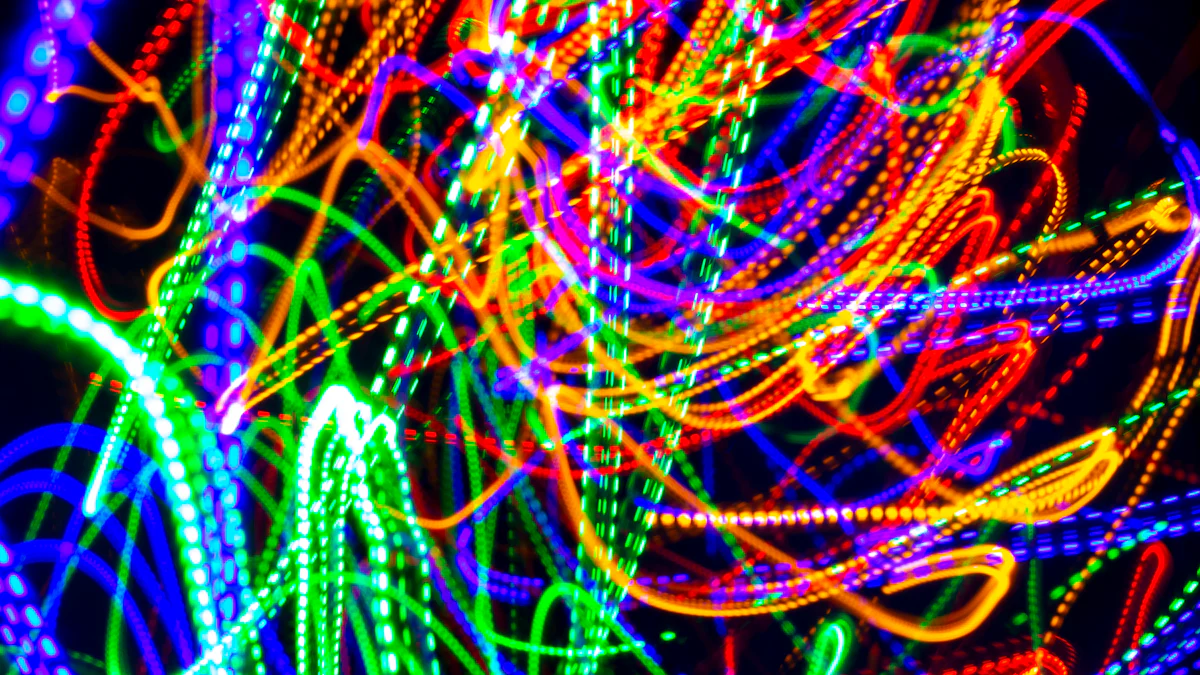
Size and Design
Physical Dimensions
The physical dimensions of LED strips play a significant role in their usability and installation. Each type has unique measurements:
2835 LED strips feature compact chips measuring 2.8 mm by 3.5 mm. Their slim design makes them ideal for tight spaces or concealed installations.
3528 LED strips have slightly larger chips at 3.5 mm by 2.8 mm. These are perfect for subtle accent lighting where space constraints are less critical.
5050 LED strips use larger chips, measuring 5.0 mm by 5.0 mm. This size accommodates three light-emitting diodes per chip, enabling higher brightness and RGB capabilities.
Impact on Installation
The size of the LED chips directly affects installation flexibility. Smaller chips, like those in 2835 LED strips, fit seamlessly into narrow spaces, such as under cabinets or within architectural details. In contrast, 5050 LED strips require more room due to their larger chips, making them better suited for open areas or applications demanding high brightness. For decorative purposes, 3528 LED strips strike a balance between size and ease of installation.
Brightness and Light Output
Lumens per LED
When comparing brightness, the lumen output of each LED strip type varies significantly:
LED Strip Type | Lumen Output (lumens per meter) |
|---|---|
SMD 2835 | 1500-2000 |
5050 | 1000 – 1500 |
3528 | 400 – 700 |
SMD 2835 LED strips deliver the highest brightness, making them ideal for general lighting. 5050 LED strips provide vibrant illumination, suitable for colorful effects or high-output needs. Meanwhile, 3528 LED strips offer a softer glow, perfect for accent lighting.
Light Distribution
The light distribution of each type also varies:
SMD 2835 LED strips excel in high luminous efficiency applications, offering consistent brightness across their length.
5050 LED strips, with their triple-chip design, produce vibrant and dynamic lighting, ideal for RGB effects.
3528 LED strips emit a lower light output, creating a cozy and decorative ambiance.
Power Consumption and Efficiency
Energy Usage
Energy consumption is another critical factor to consider. Here’s how the three types compare:
LED Strip Type | Power Consumption (watts per meter) |
|---|---|
SMD 2835 | 8-10 |
5050 | 14-18 |
3528 | 4.8 |
2835 LED strips strike a balance between brightness and energy usage, making them a top choice for energy efficiency. 5050 LED strips consume more power due to their triple-chip design, while 3528 LED strips use the least energy, ideal for low-power decorative applications.
Efficiency Ratings
Efficiency ratings highlight the performance of each type:
LED Strip Type | Lumens per Watt | Power Consumption (Watts per Meter) |
|---|---|---|
SMD 2835 | Up to 200 | 8-10 |
5050 | 100-150 | 14-18 |
3528 | 50-80 | 4.8 |
SMD 2835 LED strips lead in energy efficiency, delivering up to 200 lumens per watt. 5050 LED strips offer moderate efficiency, while 3528 LED strips prioritize low power consumption over brightness.
Heat Dissipation
Thermal Management
Heat dissipation plays a crucial role in the performance of LED strips. Among the three types, 2835 LED strips excel in this area. Their larger heat sink area efficiently disperses heat, ensuring consistent performance even during prolonged use. This design makes them a reliable choice for applications requiring both brightness and energy efficiency.
In contrast, 3528 LED strips generate less heat due to their lower light output. While this reduces the need for advanced thermal management, it also limits their brightness. On the other hand, 5050 LED strips produce significantly more heat because of their triple-chip structure and higher power consumption. Proper installation and cooling mechanisms, such as aluminum channels or heat sinks, are essential to maintain their performance and prevent overheating.
Longevity Implications
Effective heat management directly impacts the lifespan of LED strips. The smd 2835 led strip stands out for its ability to balance heat dissipation and brightness, resulting in a longer operational life. You can expect these strips to maintain their light output and efficiency over time.
5050 led strips, while bright and versatile, require careful handling to avoid heat-related damage. Without adequate cooling, their lifespan may shorten. Meanwhile, 3528 led strips, with their minimal heat generation, are less prone to thermal issues. However, their lower brightness makes them more suitable for decorative purposes rather than demanding applications.
Cost and Value
Price Differences
When comparing costs, 3528 led strips are the most affordable option. They are ideal for budget-conscious projects focused on accent lighting. In contrast, 5050 led strips are more expensive due to their advanced design and high brightness. This higher price is justified for applications requiring vibrant illumination or RGB effects.
2835 led strips strike a balance between cost and performance. They offer high brightness and energy efficiency at a competitive price, making them a popular choice for general lighting needs.
Cost-Effectiveness Over Time
The smd 2835 led strip provides significant long-term savings. Its superior energy efficiency reduces electricity bills, and its longer lifespan minimizes replacement costs. This makes it a cost-effective option for both residential and commercial use.
5050 led strips, while more power-hungry, deliver value in scenarios where high brightness or dynamic lighting effects are essential. For decorative purposes, 3528 led strips remain the most economical choice. However, their lower efficiency may lead to higher operational costs over time compared to 2835 led strips.
Applications of Each LED Strip Type
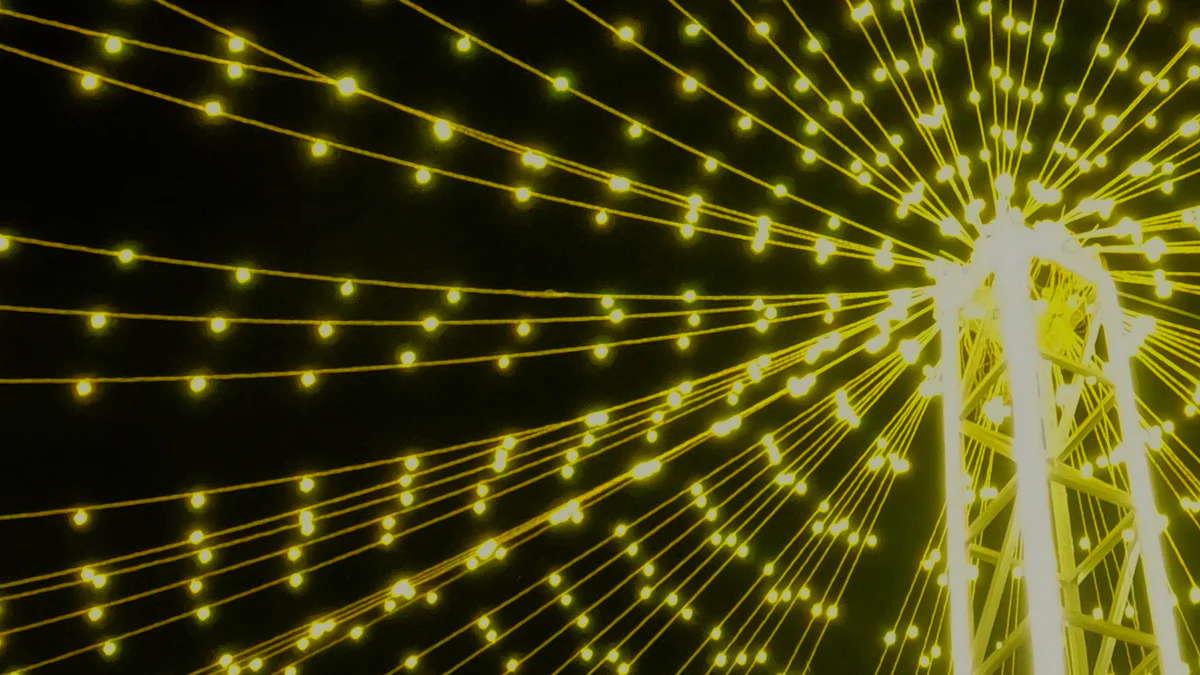
Best Uses for 2835 led strips
General Lighting
The led strip 2835 is an excellent choice for primary lighting in homes, offices, and commercial spaces. Its high brightness, delivering up to 200lumens per meter, ensures sufficient illumination for tasks and general use. You can install these strips in kitchens, workstations, or living rooms to achieve focused or ambient lighting. Their flexible design allows seamless integration into under-cabinet setups, cove lighting, or even architectural details. This versatility makes 2835 led strips a reliable option for both residential and professional environments.
Energy-Efficient Applications
If energy efficiency is your priority, the smd 2835 led strip stands out as a cost-effective choice. With a power consumption of just 8-10 watts per meter, it balances brightness and energy usage effectively. This makes it ideal for long-term installations where reducing electricity bills is essential. Whether you’re lighting a large office or a small room, these strips provide consistent performance while minimizing energy waste.
Best Uses for 3528 led strips
Accent Lighting
The 3528 led strips are perfect for accent lighting. Their compact design and lower brightness make them ideal for highlighting architectural features like coves, shelves, or staircases. Operating at just 4.8 watts per meter, they offer a cost-effective choice for subtle lighting in spaces with strong ambient light.
Feature | Description |
|---|---|
Compact Design | Flexible installation in tight spaces. |
Energy Efficiency | Low power consumption for decorative lighting. |
Common Applications | Highlighting architectural details like shelves or staircases. |
Ideal for Decor | Suitable for residential and commercial decorative purposes. |
Decorative Purposes
For decorative purposes, 3528 led strips create a cozy ambiance. Their softer glow works well in living rooms, bedrooms, or even retail displays. You can use them to add a touch of elegance to your space without overwhelming the existing lighting.
Best Uses for 5050 led strips
High-Brightness Applications
5050 led strips excel in high-brightness applications. Each chip delivers three times the light output of 3528 LEDs, making them suitable for areas with high ambient light. You can use them in bars, restaurants, or hotels for general illumination. Their waterproof options IP65/IP67 ratings also make them a great choice for outdoor lighting.
RGB and Color-Changing Effects
If you want dynamic lighting, 5050 led strips are the way to go. Their RGB capability allows you to create millions of color variations, perfect for entertainment spaces or events. These strips are commonly used in homes, bars, and commercial settings to achieve vibrant, customizable lighting effects.
Feature | 5050 LED Strips | 3528 LED Strips |
|---|---|---|
Light Output | 3 times greater than 3528 LEDs | Lower light output |
RGB Capability | Can create millions of color variations | Better for single-color applications |
Ideal Use | High ambient light areas, RGB lighting | General single-color lighting |
Factors to Consider When Choosing LED Strips
Brightness Needs
Task Lighting vs. Ambient Lighting
When choosing LED strips, you must first determine whether you need task lighting or ambient lighting. Task lighting requires brighter illumination to enhance visibility for activities like reading, cooking, or working. On the other hand, ambient lighting focuses on creating a softer, more atmospheric glow to set the mood in a space.
Here’s a quick comparison to help you decide:
Lighting Type | Brightness Needs |
|---|---|
Task Lighting | Needs brighter lights for visibility |
Ambient Lighting | Requires softer, atmospheric glow |
For task lighting, 2835 LED strips are the best option due to their high brightness of up to 2000 lumens per meter. If you’re aiming for ambient lighting, 3528 LED strips provide a gentle glow that works well for decorative purposes. For a mix of both, 5050 LED strips can offer versatility, especially if you want RGB effects.
Energy Efficiency
Balancing Brightness and Power Usage
Balancing brightness and power usage is essential when selecting LED strips. You want to achieve the desired lighting effect without wasting energy. Among the three types, 2835 LED strips stand out for their energy efficiency. They deliver up to 2000 lumens per meter while consuming only 0.2 to 1 watt per LED.
Here’s a breakdown of how each type performs:
LED Strip Type | Brightness (lumens/meter) | Power Consumption (W/meter) | Energy Efficiency |
|---|---|---|---|
SMD 2835 | 1500 – 2000 | 0.2 – 1 | High |
5050 | 1000 – 1500 | Higher due to triple-chip | Moderate |
3528 | 400 – 700 | 4.8 | Low |
If you prioritize energy efficiency, 2835 LED strips are the ideal choice. They provide excellent brightness while keeping power consumption low. 5050 LED strips, while brighter than 3528, consume more energy due to their triple-chip design. For purely decorative purposes, 3528 LED strips work well but are less efficient overall.
Budget Constraints
Upfront Costs vs. Long-Term Savings
Your budget plays a significant role in choosing LED strips. While 3528 LED strips have the lowest upfront cost, they are less efficient, which can lead to higher electricity bills over time. In contrast, 2835 LED strips offer the best long-term value. Their high brightness and energy efficiency reduce operational costs, making them a smart investment.
Here’s how the three types compare:
SMD 2835 LED strips: Best long-term value due to high brightness and energy efficiency, leading to lower electricity bills.
5050 LED strips: Higher upfront costs and power consumption, suitable for vibrant lighting but less efficient for long-term savings.
3528 LED strips: Most affordable upfront but less efficient, making them less justifiable for long-term savings compared to 2835 and 5050.
If you’re looking for a balance between cost and performance, 2835 LED strips are the most cost-effective option. For projects requiring bold lighting or RGB effects, 5050 LED strips justify their higher price. However, for purely decorative purposes, 3528 LED strips remain the most budget-friendly choice.
Installation Requirements
Space and Mounting Considerations
When installing LED strips, you need to consider the available space and the mounting method. Each type of LED strip has unique requirements based on its size and design:
2835 LED Strips: These are the smallest and most compact. Their slim profile makes them perfect for tight spaces, such as under cabinets or along walls. You can install them without needing additional support, which simplifies the process.
3528 LED Strips: These medium-sized strips work well in larger areas. They often come with simple mounting holes on the back, allowing for easy attachment to flat surfaces.
5050 LED Strips: These are the largest of the three. Their size makes them ideal for horizontal installations across rooms or open spaces. However, they may require more robust mounting solutions, such as adhesive backing or clips, to ensure stability.
Tip: Before installation, measure the area carefully and choose a strip that fits the space. For long-term durability, clean the surface thoroughly to ensure proper adhesion.
Desired Lighting Effects
Single-Color vs. RGB Options
The choice between single-color and RGB LED strips depends on the lighting effect you want to achieve:
SingleColor LED Strips: These emit a fixed hue, such as warm white, cool white, or a specific color like red or blue. They are ideal for straightforward lighting tasks, such as task lighting in kitchens or ambient lighting in living rooms.
RGB LED Strips: These offer a wide spectrum of colors and dynamic effects. You can use them to create decorative or mood-setting lighting. RGB strips allow you to customize your lighting experience through remote controls or smartphone apps, making them perfect for entertainment spaces or events.
Feature | Single-Color LED Strips | RGB LED Strips |
|---|---|---|
Lighting Effect | Fixed hue | Wide spectrum of colors |
Ideal Use | Task or ambient lighting | Decorative and mood-setting lighting |
Customization | Limited | High (via remotes or apps) |
Note: If you want a simple and consistent lighting solution, go with single-color strips. For versatility and creativity, RGB strips provide endless possibilities.
Choosing the right LED strip depends on your specific needs. Each type offers unique benefits:
2835 LED strips deliver exceptional brightness up to 200lumens per watt and energy efficiency, making them ideal for general lighting.
3528 LED strips provide a softer glow, perfect for accent lighting or decorative purposes.
5050 LED strips excel in high-output applications and RGB effects, offering vibrant and dynamic lighting.
Tip: For energy efficiency, go with 2835. For budget-friendly accent lighting, choose 3528. For bold illumination or color-changing effects, opt for 5050. Matching the strip to your application ensures the best results.
FAQ
What is the difference between 2835, 3528, and 5050 LED strips?
The main differences lie in size, brightness, and application. 2835 LED strips are compact and energy-efficient, ideal for primary lighting. 3528 LED strips provide softer light for accent lighting. 5050 LED strips are larger, brighter, and support RGB effects, making them perfect for dynamic lighting.
Which LED strip is the most energy-efficient?
The smd 2835 led strip offers the best energy efficiency. It delivers up to 200 lumens per watt while consuming only 8-10 watts per meter. This makes it a cost-effective choice for long-term installations requiring high brightness and low power consumption.
Can I use 5050 LED strips for general lighting?
While 5050 LED strips provide high brightness, they are better suited for RGB effects or high-output applications. For general lighting, 2835 LED strips are a better option due to their superior energy efficiency and consistent light output.
Are 3528 LED strips suitable for outdoor use?
Yes, 3528 LED strips can be used outdoors if they have a waterproof rating, such as IP65 or higher. These ratings protect the strips from moisture and dust, ensuring reliable performance in outdoor environments.
How do I choose the right LED strip for my project?
Consider your brightness needs, energy efficiency, and desired lighting effects. For primary lighting, choose 2835 LED strips. For accent lighting, go with 3528 LED strips. If you need RGB effects or vibrant illumination, 5050 LED strips are the best choice.
See Also
Comparing SMD 2835, 5050, And 3528 LED Strips
Choosing The Perfect LED Strip Lights For Linear Lighting
Selecting The Ideal RGB LED Strip For Your Requirements
